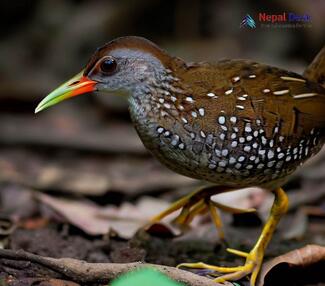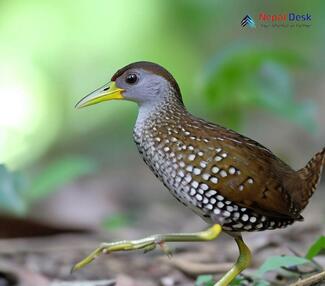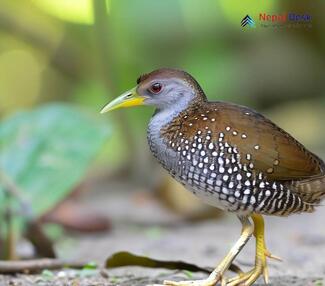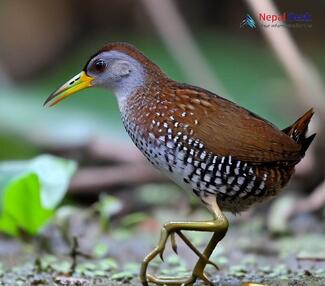The Spotted Crake (Porzana porzana) is a fascinating little bird that has captured the interest of birdwatchers and wildlife enthusiasts alike. With its distinct markings and elusive nature, this species provides a thrilling experience for those who are lucky enough to spot it in the wild. In this article, we'll explore everything you need to know about the Spotted Crake, from its appearance, habitat, and behavior to its presence in Nepal.
Unique Features and Identification
The Spotted Crake is a small waterbird that belongs to the family Rallidae. It's named after its characteristic dark brown plumage, which is beautifully adorned with white speckles and streaks. Measuring just 19-22 cm in length, the Spotted Crake can be challenging to spot as it moves discreetly through the wetlands where it thrives.
Males and females are similar in appearance, while juveniles have a darker overall hue with fewer white spots. A striking feature of these birds is their vivid greenish-yellow eyes, which stand out against their otherwise earthy-toned bodies.
Habitat and Behavior
The preferred habitats of the Spotted Crake are wetlands, marshes, and swamps with dense vegetation. They rely on this cover for protection from predators while they forage for food. Their diet consists mostly of insects, small fish, snails, and various plant matter.
During the breeding season, which typically occurs between April and June in Europe and between July and December in South Asia, these birds create nests among dense vegetation. They lay clutch sizes of 6-12 eggs that hatch after about 20 days of incubation.
A notable aspect of their behavior is their secretive nature. They have a tendency to skulk around in dense vegetation rather than moving out in the open, making sightings of this species quite rare.
Spotted Crakes in Nepal
Although the Spotted Crake is a widespread species throughout Europe and Asia, it is considered a rare visitor to Nepal. Records of this bird in the country are sporadic, with sightings mostly occurring as birds migrate to their breeding or wintering grounds. For birdwatchers in Nepal, this adds an additional level of excitement to any potential sighting.
Conservation Status
The Spotted Crake is currently classified as a species of Least Concern by the International Union for Conservation of Nature (IUCN) due to their large range and stable global population. However, habitat loss and degradation caused by agriculture and urbanization continue to threaten these birds. In countries like Nepal, where sightings are rare, conservation efforts are essential for ensuring the long-term survival of this fascinating species.
In conclusion, the elusive nature and charming appearance of the Spotted Crake have made it an alluring target for birdwatchers and wildlife enthusiasts alike. Though sightings in Nepal are rare, the excitement surrounding the possible discovery of this species makes it a noteworthy addition to any birder's wish list.




